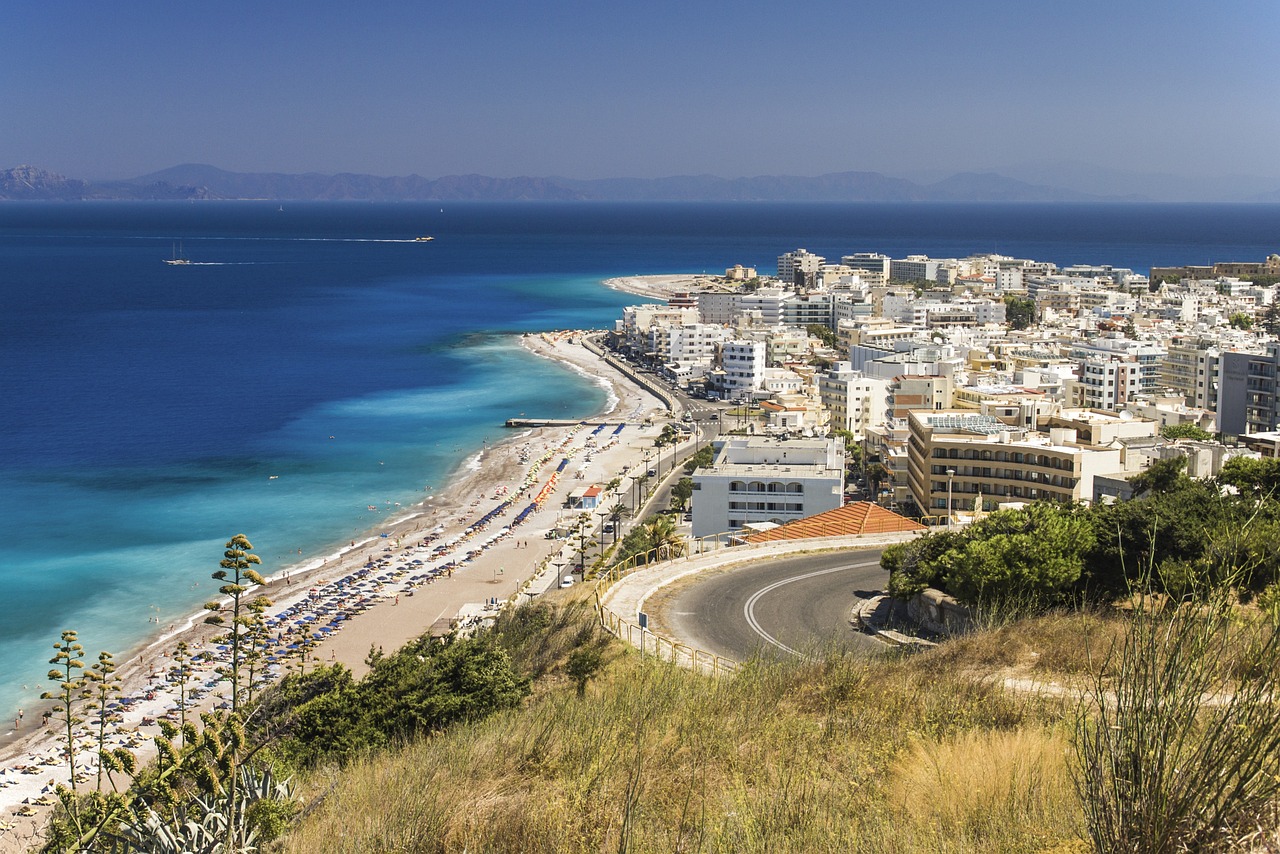Here’s an informative overview of Rhodes, Greece — one of the most historically rich and naturally beautiful islands in the Aegean Sea:
🇬🇷 Rhodes (Ρόδος, Ródos)
General Overview
- Location: Southeastern Aegean Sea, part of the Dodecanese Islands, close to the southwestern coast of Turkey.
- Coordinates: Approx. 36°N, 28°E
- Country: Greece
- Region: South Aegean
- Area: About 1,400 km² — the largest of the Dodecanese islands.
- Population: Around 120,000 inhabitants (as of 2025).
- Capital: Rhodes Town (Ródos)
Geography & Landscape
- Rhodes is known for its sunny climate, forested mountains, and long coastline.
- Terrain:
- The interior is hilly and green, dominated by Mount Attavyros (1,215 m) — the island’s highest peak.
- The coastline features both sandy beaches (e.g. Tsambika, Faliraki) and rocky coves.
- Climate:
- Mediterranean climate — hot, dry summers and mild, wet winters.
- Average annual sunshine exceeds 300 days per year, earning Rhodes the nickname “Island of the Sun.”
Nature & Wildlife
- Flora: Pine forests, olive groves, citrus trees, and wild herbs like thyme and oregano.
- Fauna:
- Butterflies: The Valley of the Butterflies (Petaloudes) is home to Callimorpha quadripunctaria, the Jersey Tiger moth.
- Birds: Important stopover for migratory birds — bee-eaters, hoopoes, and raptors.
- Reptiles: Common geckos and lizards; marine turtles (Caretta caretta) nest on some beaches.
- Natural attractions:
- Seven Springs (Epta Piges)
- Profitis Ilias forest
- Butterfly Valley (Petaloudes)
History
- Ancient Rhodes:
- Settled since the Neolithic era; flourished as an ancient maritime power.
- City of Rhodes founded in 408 BC — became a major trading and cultural center.
- Home to one of the Seven Wonders of the Ancient World: the Colossus of Rhodes, a giant bronze statue of the sun god Helios.
- Hellenistic & Roman periods: Prosperous under both empires.
- Medieval era:
- From 1309 to 1522, ruled by the Knights Hospitaller (Knights of St. John), who fortified the island.
- The Medieval Old Town of Rhodes is now a UNESCO World Heritage Site.
- Ottoman rule: 1522–1912.
- Italian rule: 1912–1947.
- Modern era: Reunited with Greece in 1948.
Cultural Highlights
- UNESCO World Heritage Site:
- Medieval City of Rhodes — one of Europe’s best-preserved medieval towns.
- Highlights:
- Palace of the Grand Master
- Street of the Knights
- Old City Walls and Gates
- Ancient sites:
- Acropolis of Lindos – overlooking a turquoise bay and whitewashed village.
- Kamiros – ruins of an ancient classical city.
- Architecture: A mix of ancient Greek, Byzantine, Crusader, Ottoman, and Italian styles.
Modern Life & Tourism
- One of Greece’s most popular islands for tourism, attracting millions yearly.
- Main resorts: Rhodes Town, Lindos, Faliraki, Kolymbia, and Ixia.
- Activities:
- Swimming, diving, sailing, hiking, and cultural exploration.
- Wine tasting and traditional Greek cuisine.
- Local specialties:
- Pitaroudia (chickpea fritters), melekouni (honey and sesame bar), and local wines.
- Transport:
- Rhodes International Airport (Diagoras) connects to Athens and major European cities.
- Ferry links to Kos, Crete, Piraeus (Athens), and Marmaris (Turkey).
Interesting Facts
- The Colossus of Rhodes (33 m tall) was one of the tallest statues of the ancient world.
- The island’s patron deity was Helios, the Sun God — symbolizing light and prosperity.
- The Old Town’s fortifications stretch over 4 km and are among the finest examples of Crusader military architecture.
- Rhodes combines Mediterranean biodiversity with ancient heritage, making it a unique destination for both nature and history enthusiasts.
Visited 19 times, 5 visit(s) today
Views: 169
Subscribe to the newsletter:
